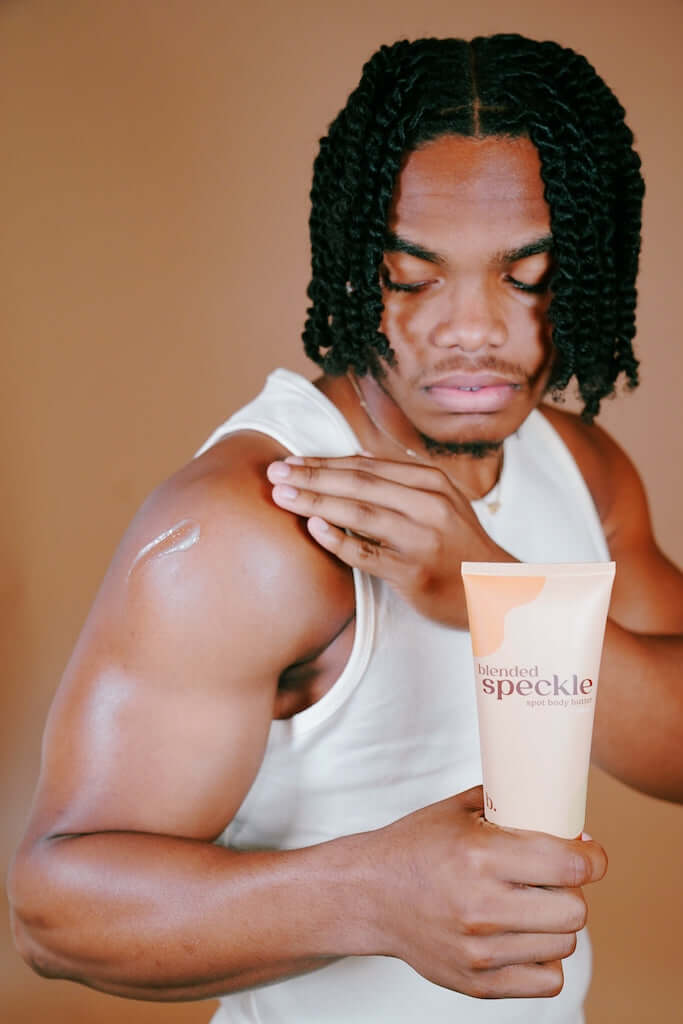objective
to examine the structural and compositional differences in male body skin and develop targeted care strategies for masculine skincare needs.
background
male and female skin differ significantly in structure, composition, and function across body regions. understanding these differences enables more effective skincare approaches for male-specific needs.
methodology & findings
comparative analysis reveals that male body skin contains 15-20% higher collagen density compared to female skin. this increased collagen provides enhanced structural support and thickness.
however, male skin shows significantly lower lipid content throughout body regions. this lipid deficiency creates inherent barrier weakness despite the increased structural thickness.
sebaceous gland activity differs between sexes, with male facial skin showing higher oil production but body skin demonstrating reduced lipid synthesis compared to female body skin.
hormonal influences affect skin composition throughout life, with testosterone contributing to increased thickness but reduced barrier lipid production.
structural characteristics
the higher collagen density in male skin creates increased mechanical strength and resilience to physical stress.
increased thickness provides enhanced protection against environmental damage but creates challenges for ingredient penetration.
despite increased thickness, the reduced lipid content creates compromise barrier function that affects moisture retention and protection.
skin aging patterns differ between sexes due to these structural variations, with male skin showing different hydration challenges over time.
lipid deficiency implications
reduced lipid content explains why men often experience extreme dryness on limbs despite having structurally "thicker" skin.
the lipid deficit creates increased susceptibility to environmental damage and accelerated moisture loss across body areas.
barrier function compromise from lipid deficiency affects overall skin health and appearance regardless of increased collagen protection.
traditional "masculine" skincare approaches often fail to address the underlying lipid deficiency that creates persistent dryness.
targeted formulation approach
speckle spot body butter addresses male skin's unique needs through formulations that compensate for lipid deficiency while working with increased structural thickness.
enhanced lipid replacement helps address the fundamental barrier weakness while providing appropriate concentrations for thicker skin penetration.
the formulation includes ingredients selected specifically for male skin's combination of increased thickness and reduced barrier function.
masculine-appropriate textures and absorption characteristics respect preferences while delivering necessary lipid supplementation.
application strategies for male skin
male body skin benefits from more intensive lipid replacement due to the inherent deficiency in barrier lipids.
focus application on areas where lipid deficiency creates the most noticeable dryness including arms, legs, and areas prone to roughness.
enhanced massage during application helps ingredients penetrate through increased skin thickness while stimulating circulation.
consistency proves particularly important for male skin due to the ongoing lipid replacement needs created by reduced natural production.
addressing masculine preferences
effective formulations respect masculine preferences for quick absorption and non-greasy textures while delivering necessary lipid supplementation.
fragrance choices and packaging considerations help encourage consistent use necessary for addressing underlying lipid deficiency.
education about skin science helps men understand why their skin requires different approaches despite appearing "tougher" than female skin.
seasonal male skin considerations
environmental challenges affect male skin differently due to structural variations and lipid deficiency patterns.
cold weather compounds lipid deficiency effects, requiring enhanced barrier protection during challenging environmental conditions.
lifestyle factors
male lifestyle patterns often increase skin stress through occupational exposure, sports activities, and grooming practices that affect barrier function.
addressing these additional stressors requires enhanced protection and repair strategies beyond basic hydration.
conclusion
understanding male body skin's unique combination of 15-20% higher collagen density with significantly lower lipid content explains why men experience extreme dryness despite having "thicker" skin. effective masculine skincare requires formulations that address the fundamental lipid deficiency while accommodating increased structural thickness. recognizing these sex-specific differences enables targeted approaches that address male skin's unique challenges and needs.


